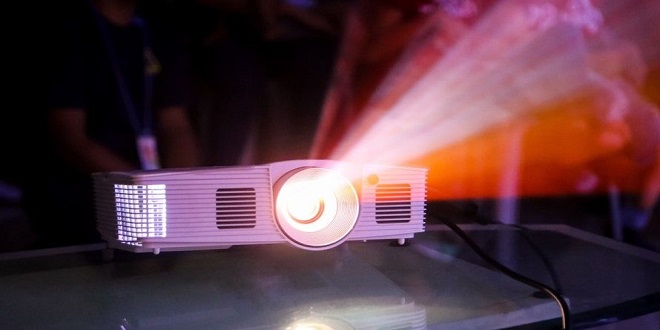
Projectors are often associated with large, heavy technology that was developed many years ago. Projectors have made great strides since their inception in 1917. Projectors today are more portable, smaller, and powerful than ever. This blog post will discuss the history of projectors as well as the most recent models.
How lanterns evolved into projectors.
It is possible that the lantern was the first projector. A lantern is a simple apparatus that consists of a glass chimney with a burning flame and a lamp. Most lanterns can create faint images on walls.
While lanterns have been around since ancient times, they were not used to project images until the 17th Century. Alexis Claude Clairaut (1696 French scientist and philosopher) used a mirror and a lantern in order to project the sun onto paper.
Antonio Maria Valseca (an Italian physicist) recorded drawing a scale model for the solar system with lantern slides in the 1800s.
Paul Julius Gottlieb Nipkow, a Frenchman who invented the Nipkow Disk (pictured right), was not born until 1839.
The disk contained viewable elements (pixels), which could rotate at 90 degrees. The disk was mounted on an axle and rotated in sync with a motor to view it.
The initial projection of an image.
The first image projection.
Since Thomas Edison’s 1890 introduction of the first commercial projector, projectors have advanced a lot. Films were very grainy back then and the projector was heavy and cumbersome. Projectors today are lighter, more compact and can project crystal-clear images.
What is the history of projectors? And how did we get to our current state-of-the art models? This is a brief history about projectors that will give you some background information on where they have come from.
1890 – Edison introduced the first projector in 1890. This projector could project images up to 8 inches wide.
1899 – W.K.L. introduced the first cinema projector. Dickson was an avid photographer. His “Cinematograph”, projector, was used to display films at theatre and vaudeville shows.
1900 – William Kennedy Dickson patents a system to project movies.
1928 – RCA (Radio Corporation of America), bought Dickson’s Patent and created the RCA Photophone Corporation.
1931 – RCA releases the first commercial television set, the 10-inch “Radiola”
1934 – Radiovision’s 25-inch version, the “Radiovision”, was released. It featured a built in projector.
1938 – Radiovision released the 22-inch version.
1954 – The first cathode-ray tube-enabled high-definition electronic television was released by the Sony Corporation.
1966 – The first solid-state TV was released by Sony Corporation, the “Trinitron”.
1969 – Texas Instruments releases the first battery-powered, pocket-sized television.
1970 – Texas Instruments releases their first video cassette recorder.
These were the first projectors that were used in late 1800’s.
In the late 1800’s, the first projectors were invented. Projectors project light from lenses onto a screen to create images. Today, many projectors are equipped with digital light processing technology. Several technologies were used in early projectors before digital light processing.
In the late 1800’s, the first projectors were invented. Projectors project light from lenses onto a screen to create images. Today, many projectors are equipped with digital light processing technology. Several technologies were used in early projectors before digital light processing.
M. Bessie Pease created the Photophone, an experimental device that utilized a photo-electric cells. The rotating disk was used to store images. Light was beam onto the photoelectric cell. The image was then converted into a sound wave which was played back through a loudspeaker.
A rotating disk of light-sensitivephosphorous was used in the Nipkow disk. The motorized mirror used to reflect the light through the hole in the disk onto a photocell. The light-sensitive phosphorous reflected the image onto the disk.
Cathode Ray Tube (CRT), which used an electron beam for illumination of a phosphor coated image, was called the Cathode Ray Tube. Data and programs were stored on the cathode-ray tube of the CRT. The electron gun reflected the image into a phosphor coat.
Each of these technologies came with limitations. The Photophone could only save one image per disc. The Nipkow disk could only store one image and was slow. Cathode Ray Tube was limited by its slow response time, bright glow and other limitations.
T. K. Land invented the next projector. Dr. T. K. Land invented the Image Dissector. This device uses a rotating mirror. Images were bounced off the mirror and into an image receiving device. The image was recorded as an electrical signal and played back via a loudspeaker.
In the late 1800’s, the Photophone was the first to be used as a projector. The Image Dissector was a better version of the Photophone. To create a moving image, the Image Dissector used an optical rotating mirror.
The Image Disintegration eventually occurs
Early projectors were used in the early 1900’s.
The first projectors that were used in the early 1900s were mechanical devices.
In 1928, the first electronic projectors were demonstrated. Emitron introduced the first European projector in 1930. It used light valves and was made possible by the use of light tubes. Emitron was the first projector that projected images onto the screen.
Engineering Research Associates (ERA), Corporation introduced the first American projector in 1931. Teleview introduced the first American light-valve projector in 1936. General Electric Company (GE), introduced a color TV to the public in 1936. ERA Corporation produced a film projector using two light valves in 1937.
In 1938, ERA Corporation began making acoustical soundprojectors. Teleview, in 1940, made the first electronic sound-equipped projector. The RCA Corporation introduced the first portable projector in 1950.
The first electronic light valve movie projector was introduced by ERA Corporation in 1951. Teleview introduced the first electronic light valve projector in 1952. It was equipped with sound and a photoelectric cell that rotated the shutter electronically. The first motorized film projector was released by the ERA Company in 1955.
The first hand-held, portable electronic light valve projector was introduced by the RCA Corporation in 1961. The first portable, handheld light valve projector was created by the ERA Corporation in 1962. The first slide projector was made by RCA Corporation in 1972.
The first laser-powered projector was created by the ERA Company in 1977. The first slide projector that used a laser was released by Kodak in 1978. The first projector with a built-in printer was made by the ERA Company in 1979. The ERA Company was the first company to create a projector with an electronic zoom in 1981.
How modern projectors function.
Projectors have existed for more than 100 years. It is fascinating to see the evolution and history of projectors.
Thomas Wilfred, a man from Massachusetts, invented the first projector in 1900. To create the images, Wilfred used 35mm film with a parabolic metal mirror. The lamp’s light was reflected onto the mirror by the projector. This light would then be reflected onto the mirror, and the projected image would appear to the viewer.
Projectors were expensive and technology was not perfected until the 1920s. The first models with better bulbs could produce images on larger screens, and the improved models were more expensive. Current models are either LCD or DLP.
Texas Instruments was the first to develop LED technology in 1995. These LED projectors can produce images as large as 300 inches.
In 2007, the first 3D projectors appeared. These projectors enabled users to see 3D images with no special glasses.
In 200, the first laser projectors were invented.
Conclusion
Projectors are a popular product in today’s global marketplace. People love to play on their projectors and watch their favorite movies. Projectors can be carried easily and are very easy to use. Projectors can also be used in the office or at home. Projectors have become an essential part of every person’s daily life. For more information, visit Topline Projector.





